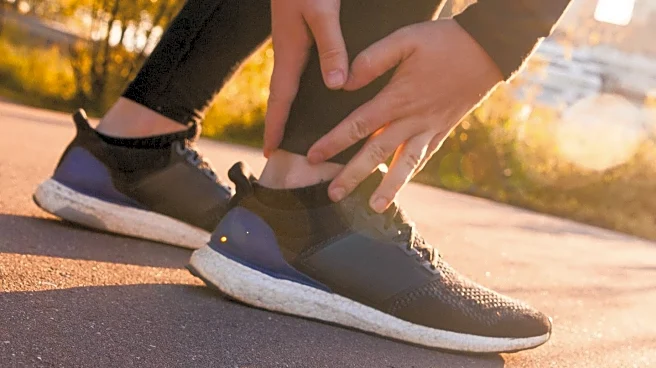What's Happening?
Japanese walking, a fitness trend developed in 2007 by Professor Hiroshi Nose and Assistant Professor Shizu Mazuki at Shinshu University, is gaining popularity for its potential health benefits. The routine
involves interval walking training (IWT), alternating between fast and slow walking speeds over a 30-minute period. Chris Alvarado, a cardiac rehabilitation exercise physiologist, highlights its simplicity and low-risk nature, making it accessible for many individuals. Studies have shown improvements in thigh strength, aerobic capacity, and blood pressure among participants who engage in Japanese walking four times a week for five months. Despite its benefits, Alvarado notes that the effectiveness of Japanese walking may vary, particularly for younger or more physically fit individuals, as the exercise may not provide sufficient physical strain.
Why It's Important?
Japanese walking offers a time-efficient exercise option that can lead to significant physiological improvements, particularly for older adults or those new to fitness routines. Its low-risk nature makes it an attractive choice for individuals seeking to enhance their cardiovascular health without the risk of injury. The trend also highlights the growing interest in interval training, which can deliver health benefits in shorter timeframes compared to traditional continuous exercise routines. However, the varying effectiveness across different demographics underscores the need for personalized fitness approaches, as younger or fitter individuals may require more intense exercise to achieve similar benefits.
What's Next?
As Japanese walking continues to gain traction, further research may explore its benefits for different age groups and fitness levels. Fitness experts might develop modified versions of the routine to cater to younger or more physically fit individuals, ensuring they receive adequate physical challenges. Additionally, the trend could inspire more studies on interval training's impact on various health conditions, potentially leading to new rehabilitation strategies for conditions like hip replacements or type 2 diabetes. Public health campaigns may also promote Japanese walking as a viable exercise option, encouraging more people to incorporate it into their daily routines.
Beyond the Headlines
The rise of Japanese walking reflects broader cultural shifts towards accessible and low-impact exercise routines, particularly for aging populations. It also highlights the importance of tailoring fitness programs to individual needs, considering factors such as age, physical condition, and personal goals. As more people seek efficient ways to improve their health, Japanese walking could influence the development of new fitness trends that prioritize simplicity and effectiveness. Additionally, the trend may encourage further exploration of interval training's potential in various health contexts, contributing to a more nuanced understanding of exercise science.











